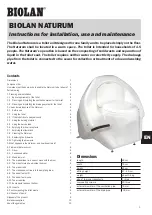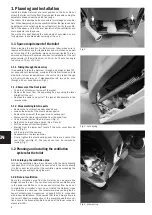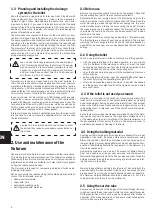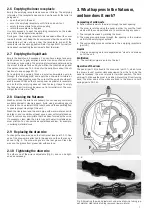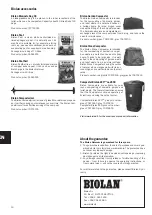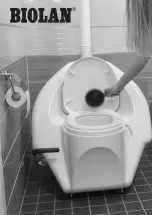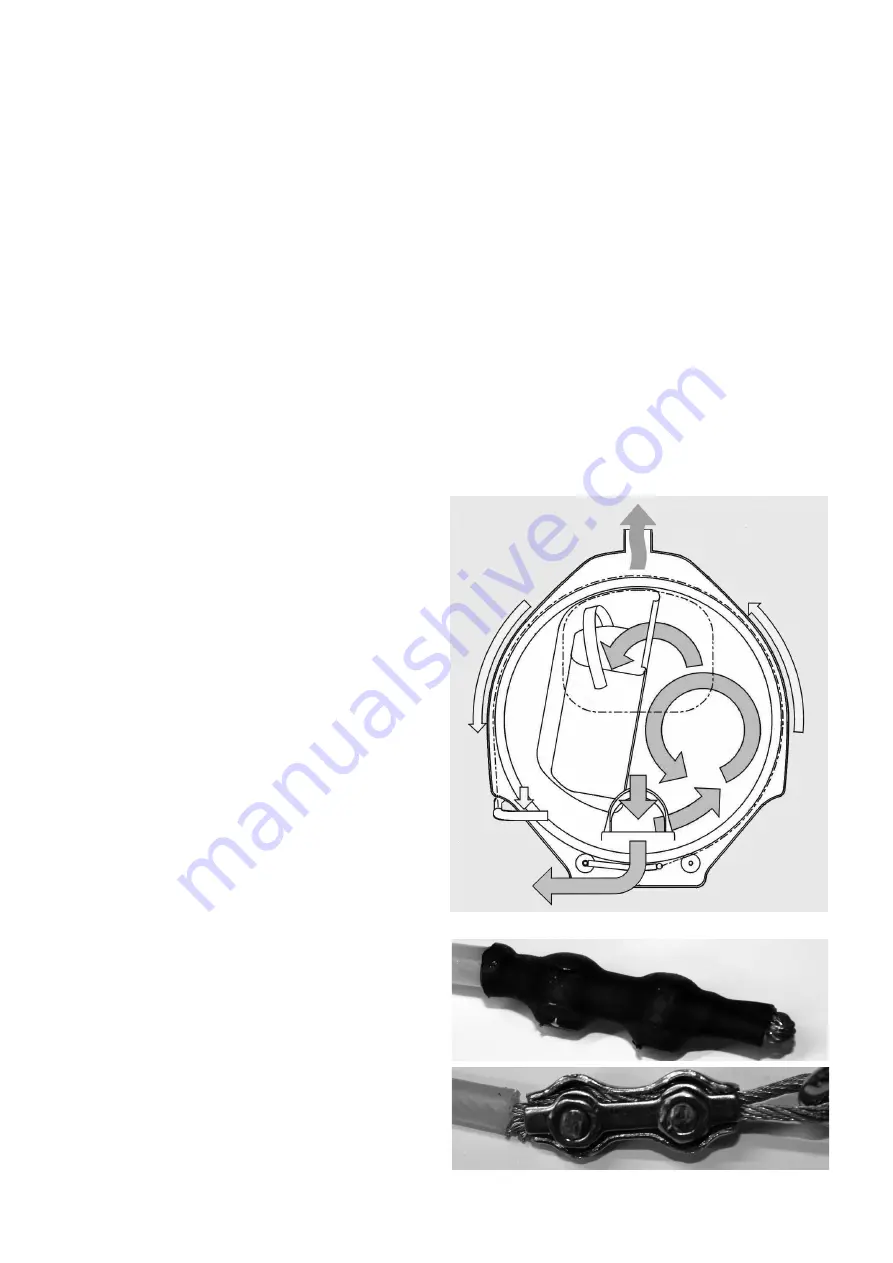
7
3. What happens in the Naturum,
and how does it work?
Composting of solid waste
A Solid waste drops into the drum through the seat opening.
B The drum is rotated using the pedal in order to cover the fresh
waste with the compost mass and to avoid creating any odour.
C The compost is mixed by rotating the drum.
D The mass gradually drops through the opening in the division
wall into the emptying receptacle.
E The composting process continues in the emptying receptacle
(part 22).
Liquids
F Urine and washing water are separated as "clean" and drained
out of the unit.
Ventilation
G The ventilation pipe is routed to the roof.
Operation of the drum
The pedal (part 18) is fixed to the draw wire (part 17), which turns
the drum around: counter-clockwise viewed from the front. As the
pedal is released, the wire returns to its initial position. The hold
wire (part 16) keeps the drum in position, preventing it from turning
back. The other ends of the wires are fixed to the draw and hold
springs (parts 19, 18).
Fig. 8
Fig. 9 Adjusting the wire Adjustment under heat shrink tubing (up-
per picture) Heat shrink tubing removed (lower picture)
G
C
E
B
A
B
F
2.6 Emptying the inner receptacle
Empty the emptying receptacle as soon as it fills up. The emptying
intervals of the receptacle depend on how frequently the toilet is
being used.
•
open the door in the seat
•
cover the emptying receptacle with its lid and pull it out
•
empty the receptacle for post-composting
•
return the receptacle to its place
It is not necessary to wash the emptying receptacle on the inside
every time the receptacle is emptied.
During use, the emptying receptacle stands open without the cover
inside the toilet unit. Keep the lid someplace other than next to the
receptacle as it may end up under the receptacle, and shift the
receptacle into the wrong position. Refer to page EN-11 for instruc-
tions about composting the solid waste from the toilet.
2.7 Emptying the liquid tank
Empty the liquid tank, if necessary. You can have a large tank emp-
tied by means of a gully emptier, a suction tank mounted on a trac-
tor trailer, or by pumping. The emptying intervals are determined by
the size of the liquid tank and by how often the toilet is being used.
One person produces 1-1.5 litres of urine daily. More about the uti-
lisation of urine on page EN-11.
For emptying by pumping, thread a small submersible pump in
through the emptying pipe, and apply the urine-water mixture di-
rectly onto the spreading area. The output of the pump should pref-
erably exceed 500 W so that it could power a sprinkler, for example,
and so that the emptying does not take too long. It pays to empty
the tank when it is raining (however, not in torrential rain). Then you
will get the dilute water "free".
2.8 Cleaning the Naturum
Wash and clean the toilet, as necessary. You can use any commonly
available domestic cleaning agent. Avoid using scrubbing agents
and tools. You can dismantle the toilet bowl and the separating flap
to enable proper cleaning of the unit.
Wash the liquid bowl and the drain pipe with warm water and mild
detergent, and in addition at least once a year, with crystallised so-
dium to remove any precipitate that has been formed by the urine.
If necessary, clean also the drain trap with water/crystallised so-
dium dilution. You can purchase crystallised sodium, for example,
in building material stores.
2.9 Replacing the draw wire
To change the draw wire, open the front jacket (see point 11.2). One
end of the draw wire is attached to the pedal, and the other end as
shown in Fig. 4. The draw wire goes in the rear groove. Clean the
wire and the groove from greasy dirt with acetone.
2.10 Tightening the draw wire
The other end of the wire is adjustable (Fig. 9), and can be tight-
ened as necessary.



